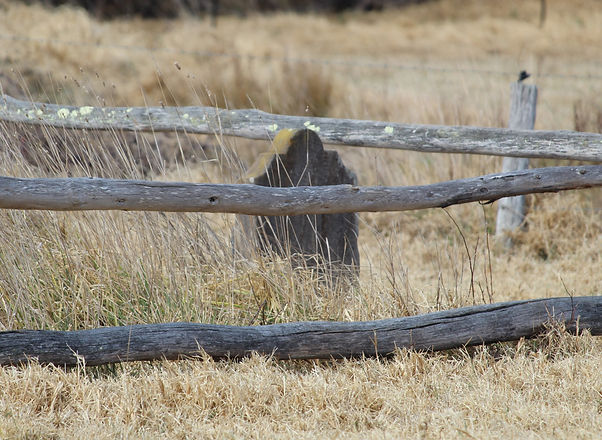Original Pambula Cemetery, Pambula Flats, Pambula:
As European settlement in the Pambula district began to establish itself along more permanent lines, the basic infrastructure that came with a township also had to be considered. One of the most pressing needs would have been a cemetery in which to inter the dead.
Pambula’s first such ground was established on the flats, where the original village was laid out by Surveyor Townsend in 1843. The area also featured a school, churches, public pound, hotel and businesses, together with the huts and houses of the inhabitants. It is not known exactly when that spot was first used for interment, but an 1853 letter signed by “R. B.” described the “Panbula” township, which included “…an acre of burial ground…” The remaining grave stones also provide some indication of the years the site was in use, with dates ranging between 1851 and 1876. Numerous certificates for other local residents record their burial at “Yowaka”, which is likely to refer to the old cemetery, the area on the southern side of the river being commonly known by that name during the early days of European settlement.
Evidence indicates that less than 60 burials took place on the site before, like most facilities associated with the original settlement, residents began to relocate their activities to higher ground to the north and south.

Images courtesy of and © Angela George. All rights reserved.
It is likely that burials had all but ceased on the flat by the late 1870’s. Certainly the new town cemetery was well in use by that time, with the Catholic portion having been consecrated by Archbishop Vaughan in 1875.
Today four graves are visible within a small wooden fenced enclosure, but this does not represent the true extent of the original cemetery. Located as it was on the flood plains, the headstones that marked the location of the graves have gradually diminished over time, with each progressive flood either washing the stones away or depositing silt on those that had been knocked over by the rushing water. It is also said that at some point a number were removed to the present cemetery.

Images courtesy of and © Angela George. All rights reserved.

Images courtesy of and © Angela George. All rights reserved.
Of the four grave sites evident on the spot today, only two have headstones, those of Bridget and James Egan, who died in 1851 and 1865 respectively; and William Coleman, who was drowned in 1852. Another two burials are marked by footstones, only one of which is inscribed “S.T. 1876; M. T. 1868; N. C. T. 1858.” These are the graves of the Thompson family, who arrived in the area in the 1840’s to work for Captain John Lloyd of The Grange. “S. T.” refers to Samuel Thompson; “M. T.” to Maria Thompson and “N. C. T.” to Nathanial C. Thompson, all members of this early and important district pioneering family.
It is interesting to note that the site of the old cemetery was not dedicated until 1917, by which time it had long since ceased to be used as a burial ground.
Today the area of the cemetery, although surrounded by pastoral grazing land, is excluded from such activity in order to protect the tangible remains of the site.
NOTE: This property is privately owned. Inclusion in this publication does not indicate or imply any general or specific permission for the general public to have access.
© Angela George. All rights reserved.

Images courtesy of and © Angela George. All rights reserved.
Bibliography:
-
Cole, W. pers. comm.
-
Empire
-
George, A. C. ("Bubby"), History of Pambula - Old Records, Early Days, unpublished notebook.
-
George, Allan, pers. comm.
-
Kennedy, Arthur, pers. comm.
-
Merimbula News Weekly
-
Pambula Voice
-
Prowse, Irwin and Joyce (ed.) Monumental Inscriptions of the Bega Valley Shire, Vol. 3, Bega Valley Genealogy Society Inc., 1990